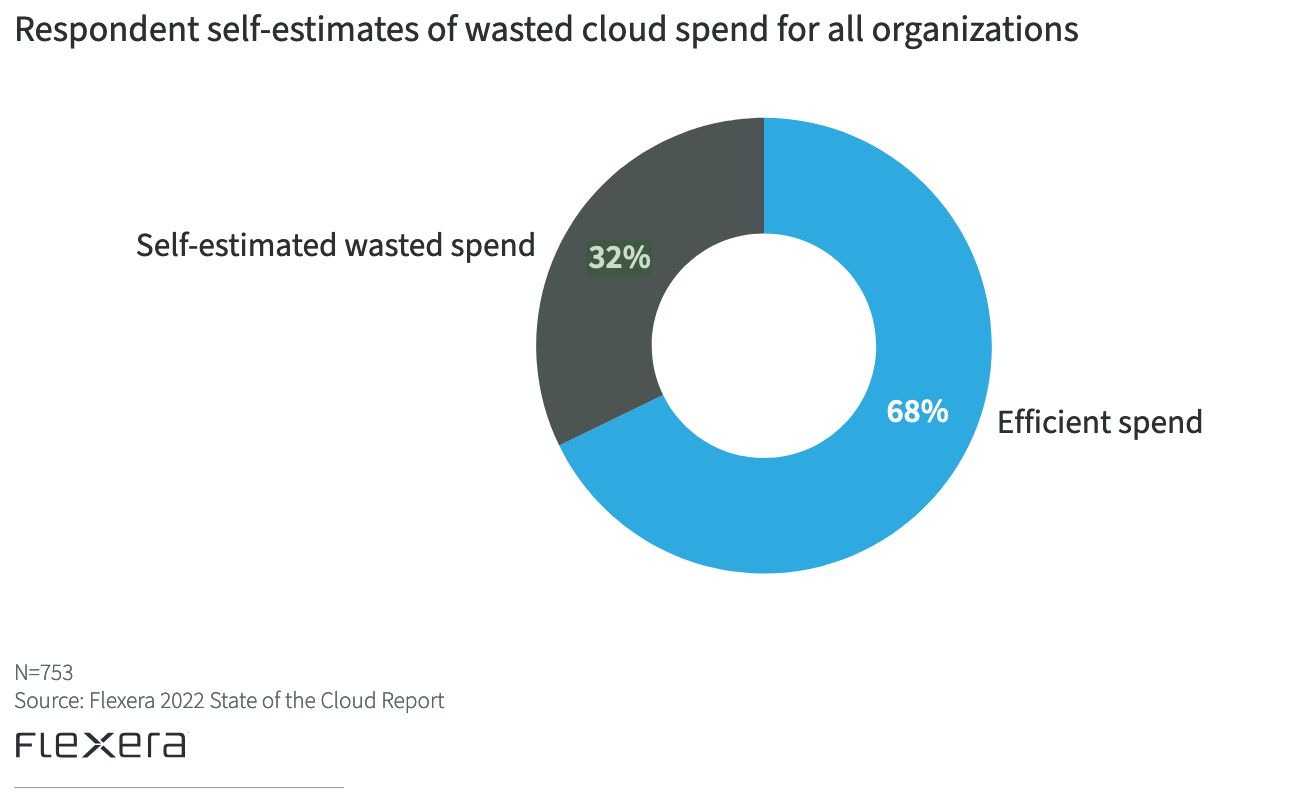and the distribution of digital products.
Mastering Cloud Capacity Management: Strategies for Efficient Resource Utilization
\ In our fast-paced digital landscape, cloud computing is ever-evolving and revolutionizing businesses across the globe. In 2022, 60% of corporate data in the United States was stored in the cloud, and is expected to increase as cloud adoption becomes more widespread. The cloud computing market accounted for USD 495 Billion in 2022 and is estimated to grow to USD 2,495 Billion by 2032, growing at CAGR of 17.8% [1]. With increased user traffic, the flexibility of cloud computing comes with a unique challenge to effectively manage cloud capacity for businesses.
\ Scaling on-demand or pay-as-you-use has opened new doors for organizations to save upfront costs and only scale when needed. There are numerous cloud capacity providers today that enable organizations to make efficient and flexible choices. This flexibility also brings some unique challenges as improper capacity planning and management can lead to resource waste, performance bottlenecks and unnecessary costs. According to a study by Flexera, the average cloud waste across organizations is around 32% of their total cloud spend [2]. Determining the right strategy to efficiently manage cloud resources can support large traffic spikes at low cost.
\

\ Mastering cloud capacity management demands a proactive mindset, one that balances workload forecasting, scalability, and continuous monitoring. By striking the right balance between meeting application demands and minimizing resource waste, organizations can unlock the true value of their cloud investments. We will explore the intricacies of cloud capacity planning and management, the strategies and best practices that empower organizations to efficiently allocate and manage their cloud resources.
\

Workload Forecast and Capacity Planning
To properly plan for future traffic growth and increased traffic, analyze historical data and trends and add business predictions to the projections. You must first determine a baseline traffic pattern for your services.
Factor in expected growth, seasonality and planned activities in your capacity planning. For e.g.: You are planning to launch your product on Shark Tank, you would have planned for inventory of your products months in advance, you need to do the same for your cloud resources supporting your business website. The last thing you would want is thousands of people placing order and your website crashes due to increased traffic. E-commerce websites and media streaming services need to plan for the increased traffic [3].
Leverage machine learning model for enhance your forecast accuracy. The models can read in historic data, identify historical trends can predict accurate capacity projections and reduce the risk of over-provisioning or under-provisioning of resources.
\
Resource Optimization
Identify and eliminate resource inefficiencies to optimize resource utilization. Take a closer look at CPU utilization or database read/writes to pinpoint idle or under-utilized instances. According to Gartner, approximately 28% of server capacity currently goes unused, as well as 40% of storage [4].
Implement right-sizing techniques to match resources with actual workloads. You can leverage AutoScaling [5] services provided by cloud providers to scale on demand. You can set day-time and night-time scale patterns.
You can further leverage cloud providers pricing models to optimize cost. Spot instance offer steep discount, if your service can handle interruptions. For e.g., Organizations can save up to 90% on compute costs by using spot instances for suitable workloads via AWS EC2 Spot [6].
\
Design for Scalability & Elasticity
Design cloud architectures with scalability and elasticity in mind to ensure your service can adapt to changing workloads. Decouple application components and leverage micro-services or server-less architectures.
Utilize load balancers and auto-scaling mechanism to dynamically adjust resource allocation based on predefined rule or triggers.
Perform load tests to ensure services can respond to sudden spikes or dips in workload without manual intervention, maintaining application performance.
\
Continuous Monitoring and Alerting
Establish comprehensive monitoring and reporting mechanisms to effectively manage capacity. Track resource utilization metrics (like CPU, memory, network, and storage), application performance indicators, and cost metrics across all cloud environments.
Analyze the utilization metrics to gain valuable insights for capacity planning, identify bottlenecks and idle resources. Eliminating under-utilized or idle resources can help save cost.
Set up alerting mechanism to proactively identify issues before there is a user impact. You can leverage tools like Application Performance Management (APM), AWS CloudWatch [7], Azure Monitor [8], and Google Cloud Operations Suite [9] to monitor services and metrics. According to 2022 study by Flexera, organizations that use cloud monitoring and optimization tools can reduce their cloud spend by up to 35% [2]
\
Leverage Automation & Cloud Providers -
Most cloud providers package services to help organization manage resources optimally. Leverage these cloud provider planning services to streamline capacity planning and maximize use of resources.
Leverage cloud provider services specifically designed for capacity management & planning. For example, AWS Trusted Advisor [10] can provide recommendations for optimizing resources and reducing costs, while Azure Advisor [11] offers similar capabilities for Microsoft Azure environments.
\
Collaborate & Seek Alignment -
There is no fun in climbing Everest alone! Involve stakeholders from partner teams, including operations, development, finance, and business units, in capacity planning to align strategies with organizational objectives and priorities.
Collaborate with development teams to gain insights and understand future updates that could impact resources.
Continuously refine and optimize strategies based on changing requirements, as business needs evolve, new technologies emerge, or cloud provider offerings change.
Mastering cloud capacity management is a journey that demands proactive mindset, planning at inception and continuously adapt and refine strategies. As the cloud continues to shape the future of computing, organizations that prioritize effective capacity management strategies outlined can unlock the full potential of their cloud investments and gain a competitive edge in today's digital economy.
References1. https://finance.yahoo.com/news/cloud-computing-market-worth-usd-130600292.html
2. https://resources.flexera.com/web/pdf/Flexera-State-of-the-Cloud-Report-2022.pdf?elqTrackId=414badd9b3cd4eee979d7f8bbfa8269e&elqaid=6925&elqat=2
3. https://www.nexcess.net/blog/sudden-spike-in-website-traffic/
4. https://dzone.com/refcardz/cloud-capacity-management
5. https://aws.amazon.com/blogs/startups/how-snorkel-ai-achieved-over-40-cost-savings-by-scaling-machine-learning-workloads-using-amazon-eks/
6. https://aws.amazon.com/blogs/hpc/save-up-to-90-using-ec2-spot-even-for-long-running-hpc-jobs/
7. https://aws.amazon.com/cloudwatch/
8. https://azure.microsoft.com/en-us/products/monitor/
9. https://cloud.google.com/products/operations
10. https://aws.amazon.com/premiumsupport/technology/trusted-advisor/
11. https://azure.microsoft.com/en-us/products/advisor/ \n
- Home
- About Us
- Write For Us / Submit Content
- Advertising And Affiliates
- Feeds And Syndication
- Contact Us
- Login
- Privacy
All Rights Reserved. Copyright , Central Coast Communications, Inc.